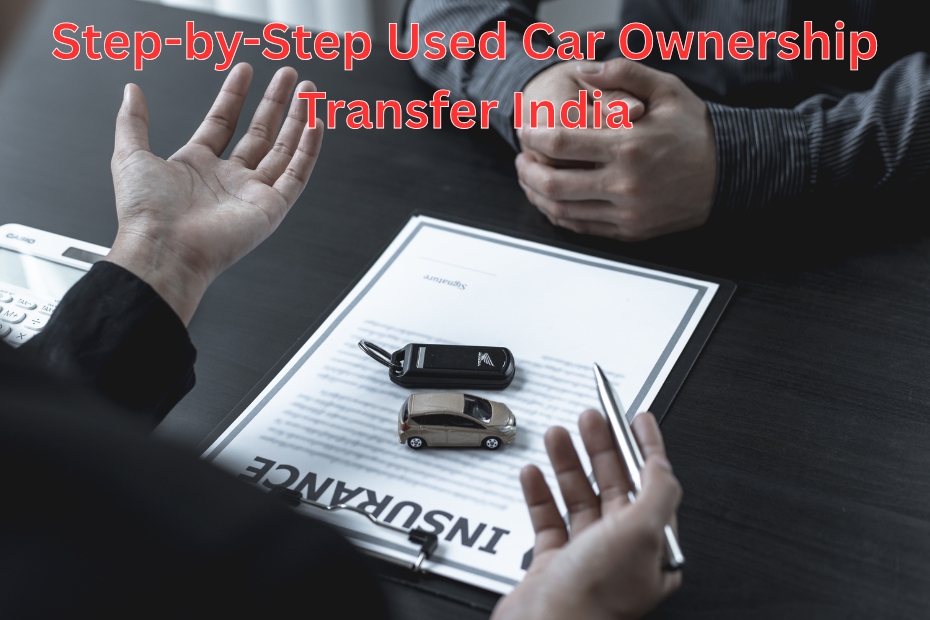Step-by-Step Guide For Used Car Ownership Transfer India
Transferring ownership of the vehicle is a crucial legal procedure when purchasing or selling a used car in India. By guaranteeing that the vehicle is registered in the new owner's name, the ownership transfer shields both parties from potential liabilities or legal issues. Knowing how to transfer ownership of a used car in India is crucial, whether you're upgrading or purchasing your first used luxury vehicle.
Why Is Transferring Ownership Important?
When you buy a used car, it is still legally registered in the name of the previous owner until the ownership is formally changed. Absent this transfer:
-
If there are any traffic infractions or accidents involving the vehicle, the previous owner may be held accountable.
-
You might run into issues when filing insurance claims or reselling.
-
It's still unclear who has legal ownership of the car.
In order to guarantee that all legal rights and obligations are appropriately allocated, a prompt ownership transfer is essential.
How to Transfer Ownership of a Used Car in India: A Comprehensive Guide
Step 1: Acquire the Required Records
Make sure you and the seller have all necessary paperwork before starting the transfer process:
-
The vehicle's original registration certificate (RC)
-
Both the buyer and the seller must properly fill out and sign Forms 29 and 30 (Notice of Transfer and Application for Registration of Transfer).
-
A current insurance certificate
-
Certificate of Pollution Under Control (PUC)
-
Address proof of the purchaser
-
If the vehicle was registered in a different state, the No Objection Certificate (NOC)
-
A copy of the identity documents (Aadhar card, PAN card, etc.) belonging to the buyer and seller
Step 2: Go to the Regional Transport Office (RTO)
The local RTO where the vehicle is registered must be visited by the buyer and the seller (or their designated representatives). Send in the completed forms along with the aforementioned files.
Step 3: Make the Required Payments
The ownership transfer is processed by the RTO for a small fee. This typically falls between ₹300 and ₹1000, though it varies from state to state.
Step 4: Examine the Vehicle (If Necessary)
Before completing the transfer, the RTO may occasionally demand that the car be physically inspected to confirm its details and condition.
Step 5: Obtain a Fresh Certificate of Registration (RC)
The RTO will issue a new Registration Certificate in the buyer's name following document verification and transfer approval. Although it may take several weeks for this to arrive, the RTO typically issues a temporary receipt attesting to the transfer.
Crucial Pointers to Keep in Mind
-
To avoid penalties, always finish the transfer within 30 days of the purchase.
-
Before the sale, make sure the seller pays off any outstanding debts, such as road tax or fines.
-
Obtain a signed contract outlining the terms of sale as well as a written receipt.
-
The buyer might have to apply for re-registration in their home state if they bought the car from another state.
How Can Dealers Assist?
This entire process can be made simpler by purchasing your used luxury vehicle from a reputable dealer like Car Street India. In order to save you time and steer clear of legal issues, knowledgeable dealers frequently help with ownership transfer, paperwork, and RTO formalities.
In Conclusion
In India, transferring ownership of a used car is an important legal procedure that safeguards both the buyer and the seller. You can guarantee a seamless transfer of vehicle ownership by adhering to the correct protocol, providing the required paperwork, and finishing the process at the nearby RTO.
To enjoy a worry-free driving experience, always give the ownership transfer top priority, whether you're purchasing a regular car or a luxury used car for the first time.





.jpg)
.jpg)


.jpeg)
Recent Comments